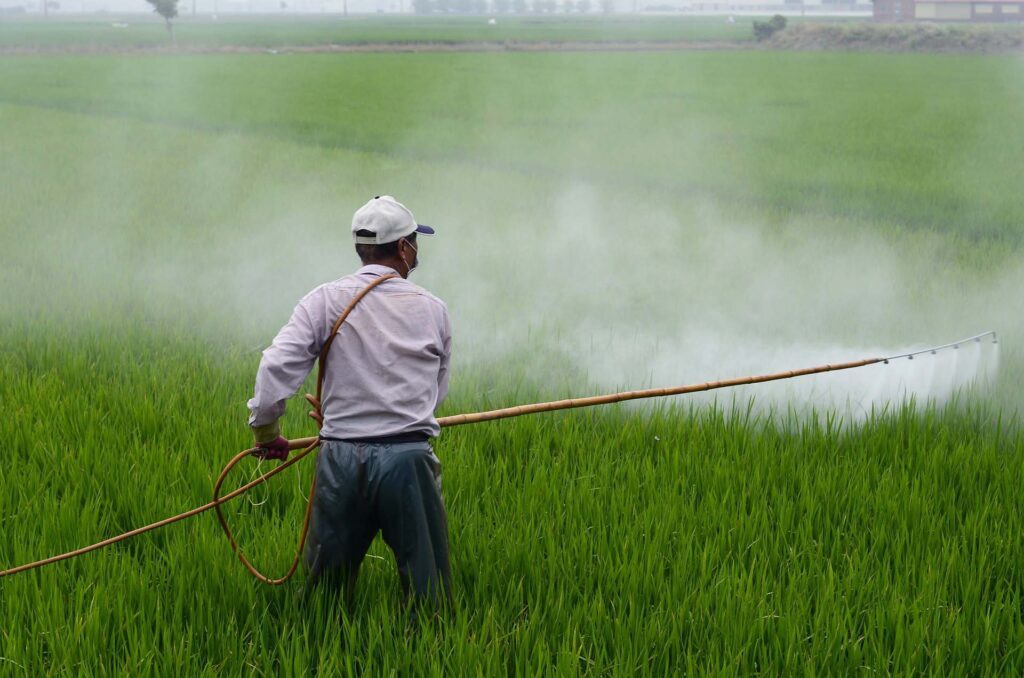
Uncovering the Dangers of Counterfeit Pesticides in Africa
Insights from Dr. Rudolf Guyer, Director General of CropLife Africa and Middle East.
In an exclusive interview with Dr. Rudolf Guyer, Director General of CropLife Africa and Middle East for 3D AG, we delve into the critical issue of counterfeiting in the African agricultural market. As the representative of top research companies such as Bayer, DuPont, and Monsanto, as well as generic pesticide manufacturers and distributors like Arysta, CropLife AME is at the forefront of combating the proliferation of counterfeit pesticides. Dr. Guyer shares his insights on how security labels can be a feasible solution to tackle this issue head-on.
Could you provide us with more in-depth insights regarding the issue of counterfeit and illegal pesticides in Africa and its impact on agriculture?
Yes, counterfeiting of pesticides is a real problem in Africa. The biggest concern is illegal chemicals entering the food value chain. The other extreme is that many fake pesticides do not contain any active ingredients, thus both issues have the potential to cause a great deal of harm to crops and to the end customer. Food companies also have a reputation to uphold, they don’t want to be associated with commodity crop supply (coffee, cocoa, fresh vegetables and fruits) where illegal products have been used and criminal actors and dealers have gained financially. For big companies such as Nestlé and Kellogg’s but also most other big retailers especially in Europe this is a no-go!
Could you shed light on which types of pesticide products are most vulnerable to counterfeiting and why they are targeted by counterfeiters?
In the pesticide industry the successful products are more likely to be counterfeited.
Expensive pesticides are those that are highly active at low dosage per hectare and distributed in small packs. Therefore they represent very high value with low weight. With more low dose pesticides being developed, much smaller doses are required to treat and protect crops.
This is attractive to counterfeiters. As little as 10-100g per hectare is sufficient to treat crops. The price of concentrated products can be up to 100 USD or more per kg or liter, while the price of pesticides that are out of patent protection has been driven down by competition.
Products like Glyphosate now only cost less than 10 USD to treat one hectare. In some countries over 100 Glyphosate products are registered and in such cases the competition of legal products in the market is driving the prices so low, that hardly anyone is making much profit and thus it is hard to imagine that there is much interest from counterfeiters.
Nevertheless illegal and fake pesticides are still numerous and the problems caused are tremendous. Recently Dr. Iddi Ramathan (Crop Pathologist, Namulo in Uganda) said that 50% of the crop loss in Uganda could be attributed to fake pesticides.
Could you provide some insights into the prevalence and types of counterfeit pesticide products currently on the market?
This differs per country and there are different types of counterfeit and illegal products on the market: fake products which often contain nothing else than colored water, and others are (good or poor) copies of original pesticides that are imported into countries illegally.
In most cases, such products have no registration or the product has been banned by the local authorities. Illegal importing means that no customs or import duties are paid and thus the pesticides are then sold much cheaper in the market and therefore are more attractive to farmers. We estimate that in Africa up to 25% of pesticides on the market are counterfeits, which includes both fake and illegal pesticides.
“We estimate that in Africa up to 25% of pesticides on the market are counterfeits, which includes both fake and illegal pesticides.”
Are there any existing security measures in place to deter the counterfeiting of pesticides?
We introduced the “Know Your Customer” (KYC) strategy to combat counterfeiting. KYC aims to protect pesticide products along the supply chain to give customers peace of mind that they are buying a genuine product.
Could you elaborate on the pilot study that tested an innovative security label for pesticides in Africa? What did the study involve?
A pilot programme called the “Africa Hologram Project” was conducted in Uganda and Ghana in 2011/2012 and lasted for 2 years.
It entailed the use of hologram labels on pesticide packaging that included a scratch pad allowing customers to verify the origin of the product via SMS. Many partners ranging from manufacturers, dealers and resellers to development agencies, NGO’s as well as regulators and other officials took part in the programme.
What were the major challenges with the “Africa Hologram Project”?
The main challenge with rolling out the programme was to inform the end customers on how they could use the hologram technology to find out if their product was indeed the genuine article or if it was a fake. An information campaign was run alongside the programme, which included a video to demonstrate why it is important to ensure legal pesticides are used.
What benefits were observed or proven as a result?
There are many benefits gained by using security measures, such as hologram labels on pesticide packaging. When pesticide producers use hologram technology they instill trust at the client base but also in the food chain. Farmers can gain a competitive edge if they can demonstrate that they use only legal products on the field. Thus, farmers welcomed and used the new security feature. During the first 3 months of the pilot phase, sales of pesticides with the security labeling doubled.
It was possible to gain many partners for this pilot, including good cooperation from authorities and co-sponsorship from NGO’s. This greatly helped boost implementation of the programme and at the same time confirmed the need for better traceability of pesticides.
The pilot project demonstrated the usefulness and effectiveness of hologram labels to combat counterfeit pesticides and the superior results have been used as a basis and reference for follow up projects and programmes in Uganda and Kenya focusing on fake seed.
What did you learn from the pilot study that you would want to share with anyone who wants to implement security labels to discourage pesticide counterfeiters?
Security labels in general are well received in the market and there was very positive feedback from the pilot study. The main point to take out of the study was that it was a feasibility test and it was concluded that it is realistic and doable to introduce hologram labels onto pesticide packaging sold in Africa.
Though there are also many challenges associated with adding holograms to pesticides. Firstly, they have to be marketed and this cost is a major drawback, because, as found during the pilot study, a hologram is not enough alone, it needs to have further safety features such as the SMS scratch pad or QR codes for example. Distributing Video and print media helps to gain the trust of end users. This and the needed knowledge transfer to the market requires time and resources.
A big issue is that some fake pesticides, although not legal, still protect crops, with unknown effects to the food chain. Therefore, it can be difficult to get Farmers to use only legal products when the much cheaper fakes are still doing the job in their view.
Would you use hologram security labeling as standard security practice, having tried them during the pilot study? Why? / Why not?
The achievements during the pilot study convinced me that security labels can make a real difference and are feasible in the African market. For a supplier or distributor of a pesticide it will always be a “business case” decision to add such additional security features on their products. If the supplier is convinced to ultimately make more turnover and profit after this extra investment and cost by also re-gaining lost market share such a programme makes good business sense.
Do you think that security labels (such as hologram technology) are a good way to prevent or reduce counterfeiting activity?
The pilot project demonstrated the usefulness and effectiveness of hologram labels to combat counterfeit pesticides and the superior results have been used as a basis and reference for follow up projects and programmes in Uganda and Kenya focusing on fake seed. In Uganda, the “Feed the Future” project funded by USAID included a scratch code label on quality seed packaging. A similar programme has been launched in Kenya on seed.
These programmes on seed have been sponsored by the “Alliance for a Green Revolution in Africa“ (AGRA) among other organizations and in addition these programmes have been supported by the local authorities who have realized that they have to engage in the fight against illegal agricultural inputs. These success stories prove that if developed and marketed correctly, hologram technology and/or scratch code systems for pesticides really can work towards a safer supply chain and meet market demands.


